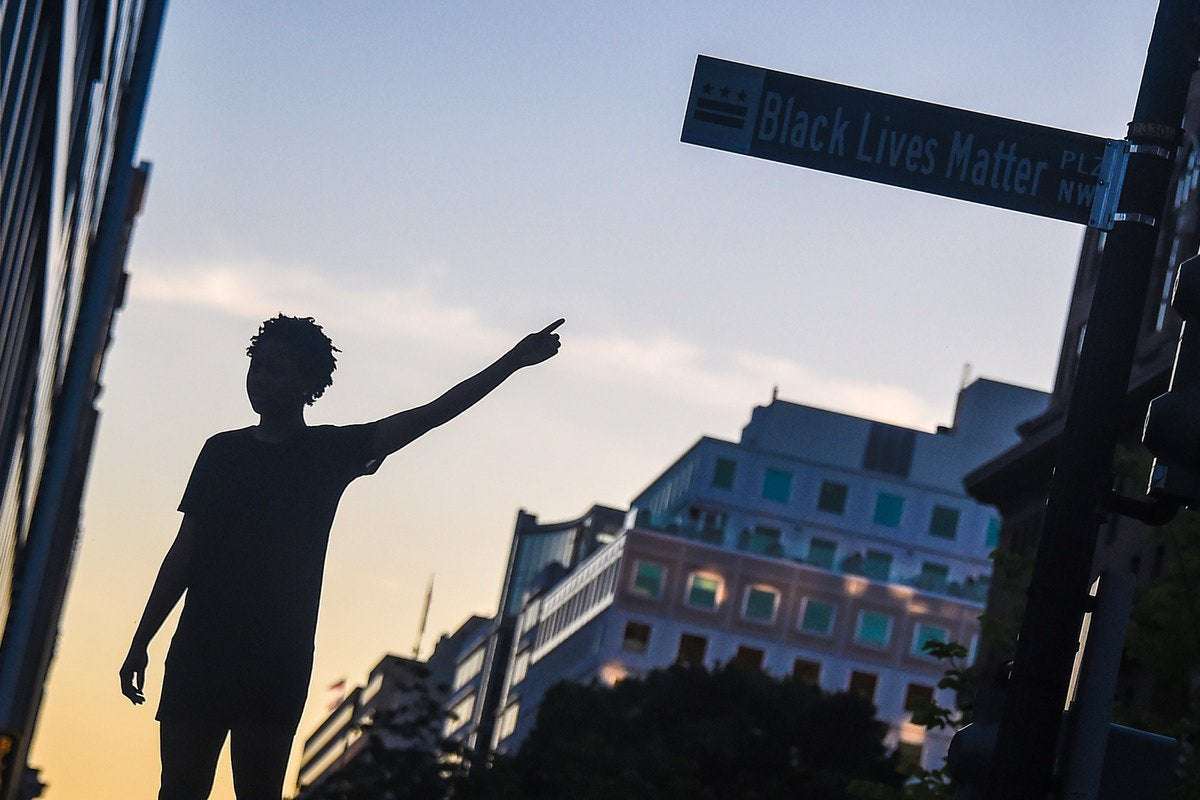The U.S. Marshals Service flew unmanned drones over Washington, D.C., in response to last summer’s Black Lives Matter protests, documents obtained by The Intercept via the Freedom of Information Act show. The documents — two brief, heavily redacted emails — indicate the Marshals flew the drones over Washington on June 5 and 7, when nationwide protests against police brutality in the wake of George Floyd’s murder were at their height. The surveillance flights occurred just days after the Trump administration ordered the mobilization of the near entirety of federal law enforcement against Washington’s protesters. The aggressive physical crackdown against Black Lives Matter rallies, particularly in Washington, D.C., spurred its own wave of outrage as police beat, chased, and chemically dispersed largely peaceful demonstrators. Less visible law enforcement responses to the rallies also drew intense criticism, including the use of social media surveillance and, in particular, the use of aerial surveillance over multiple cities by the Air National Guard and Department of Homeland Security. Government aircraft monitored 15 cities during the protests, according to the New York Times, filming demonstrators in New York, Philadelphia, and Dayton, Ohio; a Predator drone was deployed over Minneapolis.
One email provided by the Marshals Service is dated June 5 and carries the subject line “UAS Status for Protests,” apparently referring to Unmanned Aircraft Systems, common military jargon for drones. It contains only a few fragments of unredacted text but appears to have contained notes from a “UAS briefing in response to the protests” and states that a redacted entity “responded to Washington DC” and “conducted one flight,” the same day Mayor Muriel Browser asked Donald Trump to “withdraw all extraordinary law enforcement and military presence from Washington, DC.” The June 7 email is similarly fragmentary and censored but notes that the redacted entity once again “responded to Washington DC” and “conducted several flights.” Marshals Service spokesperson James Stossel declined to answer any questions about the purpose of the June 5th and 7th flights or what data was collected, stating, “The USMS does not release details of operational missions,” and denied that the Marshals flew drones over the city on any other dates. Asked how the robotic aerial surveillance of protests conforms with the agency’s narrowly defined mission, Stossel said, “The Marshals Service conducts a broad array of missions as authorized by Federal Law which may include ensuring the rule of law is maintained during protests.” Press reports from this period describe the protests in question as peaceful.
The previously unreported flights raise the question of why the U.S. Marshals Service would be flying drones over mass gatherings of First Amendment-protected activity in the nation’s capital. The marshals are the oldest law enforcement branch in the United States, dating to the 18th century, and their present day grab bag of responsibilities is more or less constrained to protecting courthouses, asset forfeitures, operating the Witness Protection Program, transporting prisoners, and hunting fugitives. The vestigial agency has historically been cagey about the existence or purpose of its drone program: In 2013, the Los Angeles Times reported, “In 2004 and 2005, the U.S. Marshals Service tested two small drones in remote areas to help them track fugitives,” but the test was “abandoned … after both drones crashed.” Documents obtained by the American Civil Liberties Union that same year via the Freedom of Information Act were also heavily redacted, providing only murky outlines of how the agency was conducting aerial surveillance. These ACLU documents stated that the Marshals possessed a “rapidly deployable overhead collection device that will provide a multi-role surveillance platform to assist in [redacted] detection of targets.” Another document provided to the ACLU noted that the marshals deployed surveillance drones through their Technical Operations Group, or TOG, which “provides the U.S. Marshal Service, other federal agencies, and any requesting state or local law enforcement agency, with the most timely and technologically advanced electronic surveillance and investigative intelligence available in the world,” according to the Marshals Service website. The Marshals’ spokesperson, however, told The Intercept, “No USMS UAS flights were conducted at the request of any other agency.” While the Marshals Service quietly acknowledged the existence of its drone surveillance “pilot program” in its 2020 annual report, the flights were largely described as tied to the agency’s core responsibility of apprehending fugitives. But the document does briefly note that “UAS operators also deployed … in support of the USMS mission during the nationwide civil unrest in Summer 2020.” The report doesn’t mention what exactly this drone-based “support” entailed, but the Marshals’ on-the-ground violence against protesters in Portland prompted widespread criticism last summer.
”Once again, high-tech tools sold for use against the worst criminals are deployed against peaceful protesters.”

cashmag9000 on April 24th, 2021 at 02:01 UTC »
So they watched them from a different angle than they were already watching??
paintflakes on April 24th, 2021 at 00:40 UTC »
If protests are in a public space, how is it spying? Wouldn't that be observing?
peanutbutterjams on April 24th, 2021 at 00:38 UTC »
This is the least of what they did.
There's nothing wrong with itself, only when coupled with a police force that beat those protestors.
Using drones to monitor protests / potential riots seems like a perfectly reasonable thing to do.